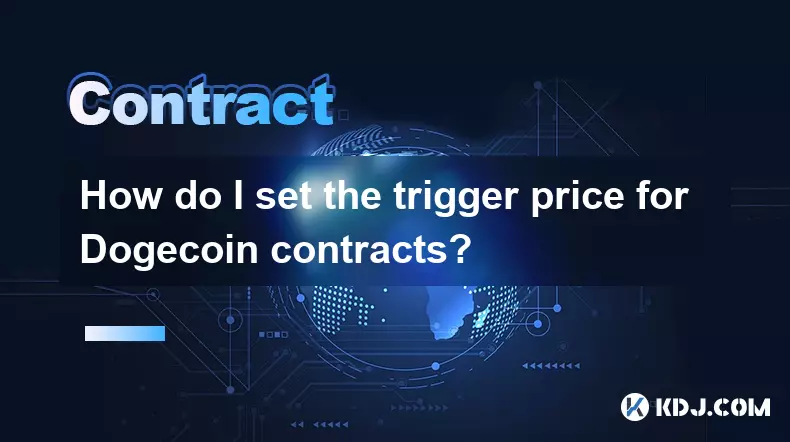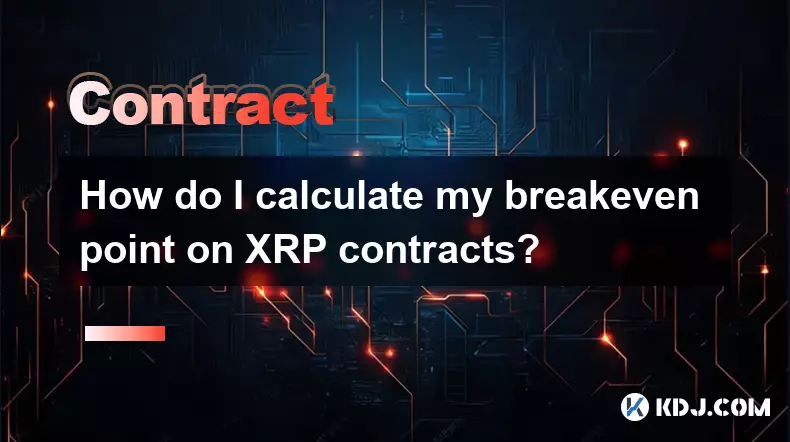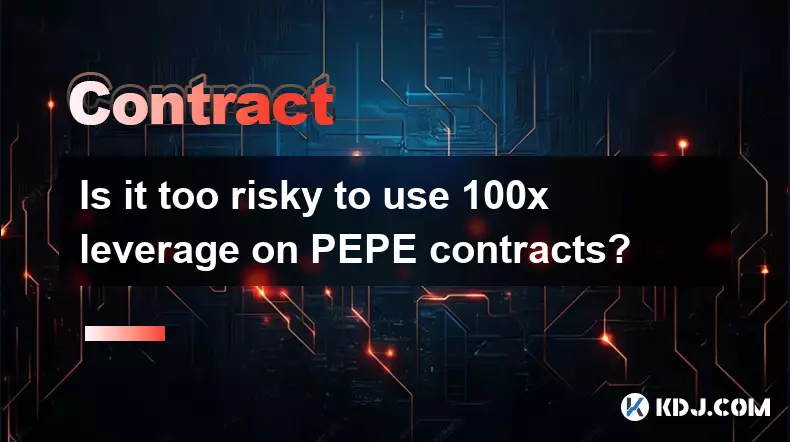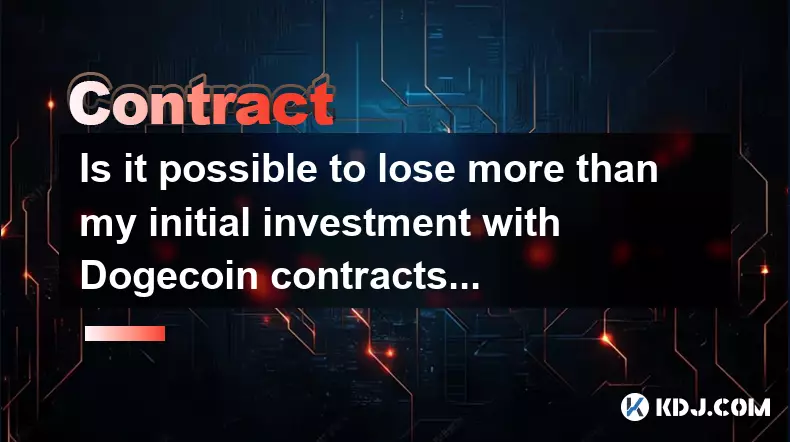-
 bitcoin
bitcoin $122659.385674 USD
0.52% -
 ethereum
ethereum $4484.113342 USD
-0.09% -
 bnb
bnb $1304.229256 USD
-0.85% -
 tether
tether $1.000204 USD
-0.03% -
 xrp
xrp $2.860636 USD
-0.51% -
 solana
solana $227.288799 USD
2.36% -
 usd-coin
usd-coin $0.999805 USD
0.01% -
 dogecoin
dogecoin $0.252837 USD
1.18% -
 tron
tron $0.341149 USD
1.12% -
 cardano
cardano $0.830507 USD
0.33% -
 hyperliquid
hyperliquid $45.792319 USD
0.04% -
 chainlink
chainlink $22.422164 USD
1.55% -
 ethena-usde
ethena-usde $1.000283 USD
0.01% -
 sui
sui $3.511389 USD
0.83% -
 stellar
stellar $0.385276 USD
-0.44%
How do I set the trigger price for Dogecoin contracts?
A trigger price in Dogecoin futures activates stop-loss or take-profit orders when the market hits a specified level, but execution depends on mark or last traded price, affecting timing and slippage.
Sep 24, 2025 at 10:37 am

Understanding Trigger Prices in Dogecoin Futures
1. A trigger price in Dogecoin contract trading serves as the activation point for conditional orders such as stop-loss or take-profit instructions. It is not the execution price but rather the market price level that prompts the system to process your predefined order. When the last traded price of Dogecoin reaches this specified value, the platform initiates the next step based on your order type.
2. Traders must differentiate between mark price and last traded price when setting triggers. Some exchanges use the mark price—calculated from underlying index values and funding rates—to prevent manipulation and ensure fair liquidation practices. Others rely on the most recent transaction price on the order book. This distinction affects how quickly a trigger activates, especially during volatile swings.
3. Selecting the appropriate pricing method depends on your risk tolerance and trading strategy. Using mark price can delay trigger activation during sharp dips or spikes, offering protection against flash crashes. Conversely, last traded price responds immediately to market activity, enabling faster reactions but increasing exposure to short-term noise.
4. Advanced platforms allow users to manually choose which price source governs their trigger conditions. Always verify the default setting within your exchange’s derivatives interface before placing high-value positions. Misunderstanding this detail may lead to unexpected executions or missed opportunities during fast-moving markets.
Configuring Stop-Loss and Take-Profit Levels
1. To protect capital in leveraged Dogecoin contracts, traders set stop-loss triggers below long entry prices or above short entry points. For instance, if you enter a long position at $0.085, selecting a trigger at $0.079 ensures the system evaluates whether to close the trade once that level is hit. The actual fill price might differ slightly due to slippage, particularly in low-liquidity environments.
2. Take-profit triggers function similarly but aim to secure gains. Suppose you anticipate resistance near $0.095; setting a trigger there allows automatic exit when the market approaches that zone. These tools remove emotional interference by enforcing discipline even when markets move rapidly overnight or during distractions.
Proper placement requires analyzing historical volatility, support/resistance zones, and recent candlestick patterns to avoid premature triggering caused by normal price wicks.3. Conditional orders often include both stop-loss and take-profit components simultaneously. Platforms typically require specifying whether these are independent orders or part of an OCO (One-Cancels-the-Other) setup. In OCO mode, fulfillment of one leg automatically cancels the other, preventing conflicting outcomes.
4. Some interfaces display real-time probability indicators showing how likely a trigger is to activate based on current momentum and open interest shifts. While not foolproof, these analytics assist in fine-tuning levels so they align with realistic breakout or reversal expectations rather than arbitrary round numbers.
Managing Slippage and Execution Gaps
1. Even after a trigger activates, actual execution occurs at prevailing market rates, which may diverge significantly during news events or sudden sell-offs. This gap between trigger and fill price is known as slippage. Contracts with deep order books—such as those on major centralized exchanges—typically exhibit tighter spreads and reduced deviation.
2. To minimize adverse slippage, traders can attach limit parameters to triggered orders. Instead of allowing any available price post-trigger, a limit ensures execution only within a defined range. However, this introduces risk of partial or failed fills if liquidity dries up instantly.
3. Monitoring open interest and funding rate trends helps anticipate periods where large liquidations could distort pricing temporarily. High positive funding suggests excessive long bias, making stop-loss clusters vulnerable to cascading wipes when reversals occur. Adjusting trigger distances during such phases adds buffer against predatory moves.
Using wider stop intervals combined with time-based filters—like requiring the trigger price to hold for more than five minutes—can reduce false signals generated by micro-manipulation or bot-driven spikes.4. Backtesting strategies using historical tick data enables evaluation of how chosen triggers would have performed under past volatility regimes. Many professional traders iterate through multiple configurations to identify optimal balance between responsiveness and resilience before deploying live capital.
Frequently Asked Questions
What happens if the Dogecoin price gaps past my trigger level?If the market jumps or drops abruptly due to breaking news or macroeconomic shocks, it may skip over your designated trigger entirely. In such cases, the system executes only when connectivity and price feeds resume normalcy, potentially resulting in delayed or unfavorable fills depending on order type and exchange protocols.
Can I modify a trigger price after placing the order?Yes, most derivative platforms permit adjustment of active conditional orders as long as they haven’t been triggered. You can edit the price level, switch between mark/last price references, or change associated limit settings through the open orders panel. Instant updates depend on server response times during peak loads.
Do different leverage levels affect trigger behavior?Leverage itself does not alter how triggers operate, but higher leverage reduces the price distance needed to reach liquidation thresholds. Consequently, tightly placed triggers become more critical in highly leveraged positions to avoid total loss amid minor fluctuations.
Disclaimer:info@kdj.com
The information provided is not trading advice. kdj.com does not assume any responsibility for any investments made based on the information provided in this article. Cryptocurrencies are highly volatile and it is highly recommended that you invest with caution after thorough research!
If you believe that the content used on this website infringes your copyright, please contact us immediately (info@kdj.com) and we will delete it promptly.
- Binance Alpha's AB Token Crash: A Cautionary Tale in Cryptocurrency
- 2025-10-09 20:45:17
- Crypto ETFs, Altcoins, and Wall Street: Navigating the New Frontier
- 2025-10-09 20:45:17
- Bitcoin's Decade of Dominance: A Super Reason to Hold for the Next 10 Years?
- 2025-10-09 20:25:15
- FUN Token, SportFun Network, and Football Fun: A Winning Play in the Crypto Game?
- 2025-10-09 20:50:11
- Joke's On You, Copyright Thieves: Datavault AI's Joke Token Revolutionizes Comedy
- 2025-10-09 20:50:11
- Joke Token, Copyright Protection, and Datavault AI: A New Era for Comedy?
- 2025-10-09 20:55:11
Related knowledge

How to calculate the ROI for Ethereum contracts?
Oct 09,2025 at 04:36pm
Understanding Ethereum Contract ROI Basics1. Return on Investment (ROI) for Ethereum contracts begins with tracking the initial capital deployed into ...

How do I calculate my breakeven point on XRP contracts?
Oct 09,2025 at 08:36pm
Understanding the Breakeven Point in XRP Futures TradingCalculating the breakeven point for XRP contracts is essential for traders who engage in futur...

What are the settlement procedures for XRP contracts?
Oct 09,2025 at 04:01pm
Understanding XRP Futures and Derivative Contracts1. XRP derivative contracts are typically offered by cryptocurrency exchanges that support margin tr...

How to reduce trading fees for Bitcoin contracts?
Oct 09,2025 at 02:37pm
Understanding Bitcoin Contract Trading Fees1. Trading fees on Bitcoin contracts are typically charged by exchanges for executing buy and sell orders. ...

Is it too risky to use 100x leverage on PEPE contracts?
Oct 09,2025 at 04:18pm
Understanding 100x Leverage in PEPE Contracts1. Trading PEPE contracts with 100x leverage allows traders to control a much larger position using a sma...

Is it possible to lose more than my initial investment with Dogecoin contracts?
Oct 09,2025 at 02:00pm
Understanding the Risks of Dogecoin Futures Trading1. Trading Dogecoin futures contracts introduces financial exposure that extends beyond the origina...

How to calculate the ROI for Ethereum contracts?
Oct 09,2025 at 04:36pm
Understanding Ethereum Contract ROI Basics1. Return on Investment (ROI) for Ethereum contracts begins with tracking the initial capital deployed into ...

How do I calculate my breakeven point on XRP contracts?
Oct 09,2025 at 08:36pm
Understanding the Breakeven Point in XRP Futures TradingCalculating the breakeven point for XRP contracts is essential for traders who engage in futur...

What are the settlement procedures for XRP contracts?
Oct 09,2025 at 04:01pm
Understanding XRP Futures and Derivative Contracts1. XRP derivative contracts are typically offered by cryptocurrency exchanges that support margin tr...

How to reduce trading fees for Bitcoin contracts?
Oct 09,2025 at 02:37pm
Understanding Bitcoin Contract Trading Fees1. Trading fees on Bitcoin contracts are typically charged by exchanges for executing buy and sell orders. ...

Is it too risky to use 100x leverage on PEPE contracts?
Oct 09,2025 at 04:18pm
Understanding 100x Leverage in PEPE Contracts1. Trading PEPE contracts with 100x leverage allows traders to control a much larger position using a sma...

Is it possible to lose more than my initial investment with Dogecoin contracts?
Oct 09,2025 at 02:00pm
Understanding the Risks of Dogecoin Futures Trading1. Trading Dogecoin futures contracts introduces financial exposure that extends beyond the origina...
See all articles










































































